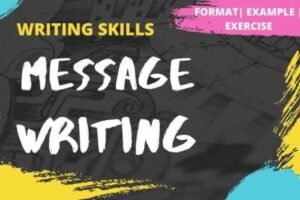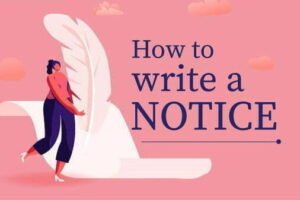
Best Reading Comprehension Tips for Students
Reading Comprehension Notes for Class 7th English

What is Reading Comprehension?
Reading comprehension is the ability to read a text, understand its meaning, and interpret what the writer is trying to say. It’s not just about reading words but also about grasping the ideas, emotions, and messages hidden in them. For Class 7 students, this skill is important because it helps in understanding stories, poems, essays, and even subjects like science and social studies.
When you read a passage, your brain works like a detective. It looks for clues, connects ideas, and answers questions. Good comprehension makes you a better reader, thinker, and communicator.
Why is Reading Comprehension Important?
- Improves Understanding: It helps you know what the text is about—whether it’s a story, a lesson, or a news article.
- Builds Vocabulary: You learn new words and their meanings while reading.
- Enhances Imagination: Stories and descriptions take you to new places in your mind.
- Helps in Exams: Many questions in English and other subjects are based on passages you need to understand.
- Daily Life Skill: From reading instructions to understanding a letter, comprehension is everywhere!
Steps to Improve Reading Comprehension
Here’s a simple guide to become better at understanding what you read:
1. Preview the Text
Before you start reading, take a quick look at the passage:
- Read the title or heading to guess what it’s about.
- Look at any pictures, bold words, or subheadings.
- Ask yourself: “What do I already know about this topic?”
For example, if the title is “The Clever Fox,” you can guess it’s a story about a fox using its smartness.
2. Read Actively
Don’t just move your eyes over the words—pay attention!
- Read slowly and carefully, especially the first time.
- Pause after a paragraph to think about what it said.
- Underline or note down words you don’t understand.
3. Ask Questions
While reading, keep asking:
- Who is the story about? (Characters)
- What is happening? (Events)
- Where and when does it take place? (Setting)
- Why did something happen? (Reasons)
- How does it end? (Conclusion)
For example, in a story about a lost dog, ask: “Why did the dog run away? How did the owner find it?”
4. Find the Main Idea
Every passage has a main point—the big idea the writer wants to share. To find it:
- Look at the first and last sentences of a paragraph.
- Think: “What is this mostly about?”
- Ignore small details like examples and focus on the key message.
Example: A passage about saving water might have examples like “turn off taps” or “fix leaks,” but the main idea is “why water conservation is important.”
5. Look for Supporting Details
These are facts, examples, or descriptions that explain the main idea. They make the text more interesting and clear. For instance:
- Main Idea: “Elephants are strong animals.”
- Supporting Detail: “They can lift heavy logs with their trunks.”
6. Summarize in Your Own Words
After reading, close the book and say or write what you understood. Keep it short and simple. For example:
- Passage: A long story about a boy helping a bird.
- Summary: “A boy found an injured bird and took care of it until it could fly again.”
7. Check Your Understanding
Answer questions about the passage or discuss it with a friend or teacher. If you’re stuck, reread the tricky parts.
Types of Passages in Class 7 English
In your textbook, you’ll find different kinds of texts for comprehension. Each has a purpose:
- Stories (Narratives)
- About people, animals, or imaginary characters.
- Example: “The Thirsty Crow” teaches problem-solving.
- Focus: Characters, problem, solution.
- Descriptive Texts
- Describes a person, place, or thing in detail.
- Example: A passage about a rainy day.
- Focus: Adjectives and vivid details.
- Informative Texts
- Gives facts or explains something.
- Example: “How Plants Grow.”
- Focus: Facts, steps, or processes.
- Poems
- Uses rhyme and rhythm to share feelings or ideas.
- Example: A poem about nature.
- Focus: Meaning behind words, emotions.
Common Question Types in Comprehension
After reading a passage, you’ll face questions to test your understanding. Here’s what to expect:
- Factual Questions
- Asks for details directly from the text.
- Example: “What did the boy eat for lunch?”
- Tip: Look for the exact answer in the passage.
- Vocabulary Questions
- Asks the meaning of a word or its opposite.
- Example: “What does ‘brave’ mean in the story?”
- Tip: Use the sentence around the word to guess.
- Inference Questions
- Asks you to guess something not directly said.
- Example: “Why was the girl sad?”
- Tip: Use clues from the text and think logically.
- Main Idea Questions
- Asks what the passage is mostly about.
- Example: “What is the story teaching us?”
- Tip: Focus on the big picture, not tiny details.
- Personal Response Questions
- Asks your opinion or feelings.
- Example: “What would you do if you were the character?”
- Tip: Be honest and explain why.
Tips to Answer Comprehension Questions
- Read the Questions First: This helps you know what to look for while reading.
- Use the Passage: Always go back to the text to find answers—don’t guess blindly.
- Write Short Answers: For a 2-mark question, write 1-2 sentences. Don’t overwrite.
- Use Complete Sentences: Instead of “Yes,” write “Yes, the dog was hungry.”
- Check Spelling: Simple mistakes can lose marks.
Practice Example
Here’s a short passage followed by questions to practice:
Passage:
Rina loved her garden. Every morning, she watered the plants and pulled out weeds. One day, she saw a tiny bird with a broken wing. Rina made a small nest for it and fed it grains. After a week, the bird flew away, and Rina felt happy.
Questions:
- What did Rina do every morning?
- Why couldn’t the bird fly at first?
- What does “tiny” mean?
- Why did Rina feel happy in the end?
- Would you help a bird like Rina? Why?
Answers:
- Every morning, Rina watered the plants and pulled out weeds.
- The bird couldn’t fly because it had a broken wing.
- “Tiny” means very small.
- Rina felt happy because the bird she helped flew away after getting better.
- Yes, I would help a bird because I like animals and want to see them safe.
Common Mistakes to Avoid
- Skipping Words: Missing even one word can change the meaning.
- Rushing: Reading too fast leads to confusion.
- Ignoring Context: Don’t guess word meanings without checking the sentence.
- Copying Long Answers: Keep it short unless asked for detail.
How to Practice Reading Comprehension
- Read Daily: Start with storybooks, comics, or newspapers.
- Discuss: Talk about what you read with family or friends.
- Solve Worksheets: Use school exercises or online passages.
- Play Word Games: Like crosswords or riddles to build vocabulary.
- Write Summaries: Practice summarizing chapters from your textbook.
Final Thoughts
Reading comprehension is a skill that grows with practice. It’s like a muscle—the more you use it, the stronger it gets. For Class 7 students, it’s a chance to enjoy stories, learn new things, and score well in exams. So, pick up a book, read with curiosity, and let your mind explore!
Download pdf notes and Sulutions of the Chapter:
Please Visit Readspot for Hindi Medium Study Material



